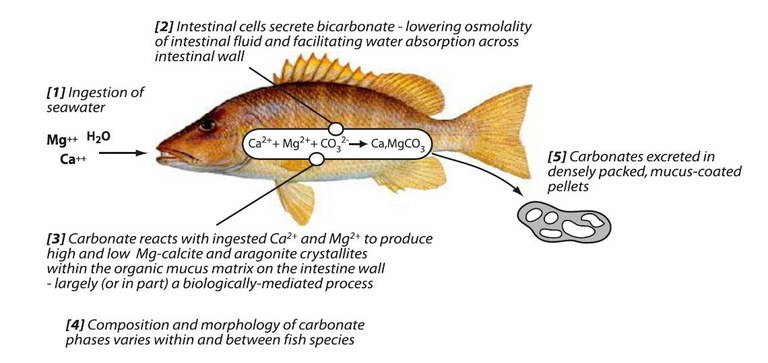Published on March 8th in the Proceedings of the National Academy of Sciences, researchers Chris Perry, Michael Salter, and others published a paper entitled “Fish as Major Carbonate Mud Producer and Missing Components of the Tropical Carbonate Factory.” In this paper, they show that tropical marine fish produce and excrete in their waste precipitated calcium carbonate of a very fine particle size (most < 2 µm in diameter) and that this amount of excreted calcium carbonate is quite substantial accounting for on average 14% of all the calcium carbonate mud in the area.
The researchers made some calculations based on the amount of calcium carbonate excreted by the collective biomass of fish in the Bahaman archipelago: 6.1×106 kg calcium carbonate / year. The Bahaman archipelago is ∼111,577 km2 (43,000 mi2) and this mass of calcium carbonate is equivalent to over 37 blue whales in mass (a blue whale, the largest whale on the planet, is on average 180 tons).
They also found that the particle shapes excreted by the eleven species of fish studied in this paper (barracuda, schoolmaster, etc) in the Great Bahama Bank were diverse and highly species dependent and could be identified in sedimentary analysis of the marine mud in the area. These shapes ranged from dumbbell-shaped to spheroid depending on the species.
The researchers conclude that:
Fish thus represent a hitherto unrecognized but significant source of fine-grained carbonate sediment, the discovery of which has direct application to the conceptual ideas of how marine carbonate factories function both today and in the past.











0 Comments